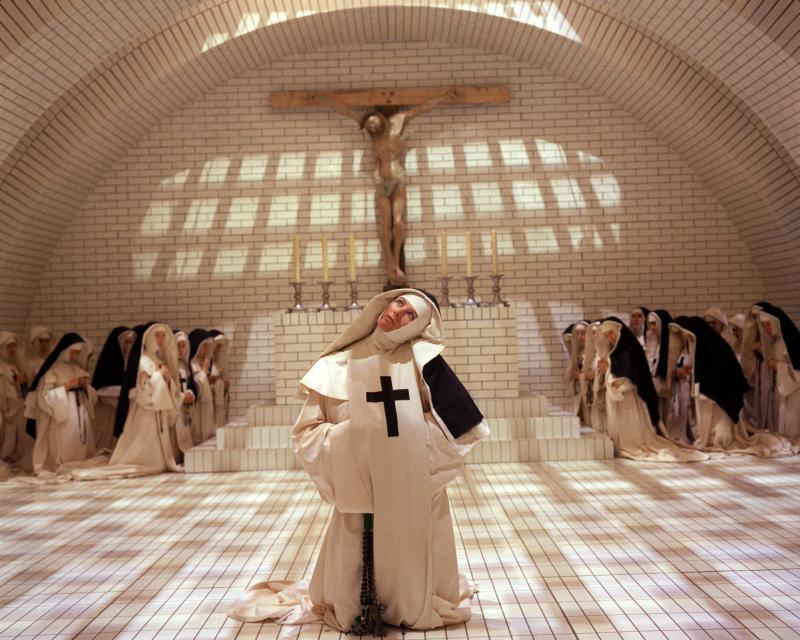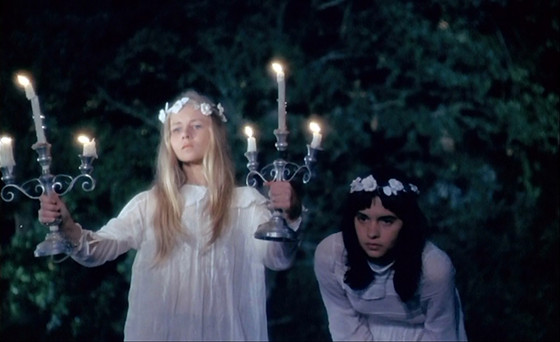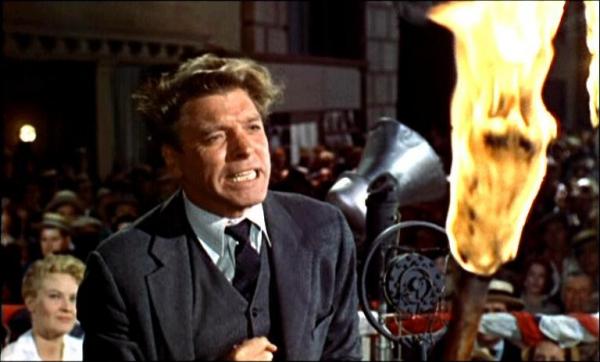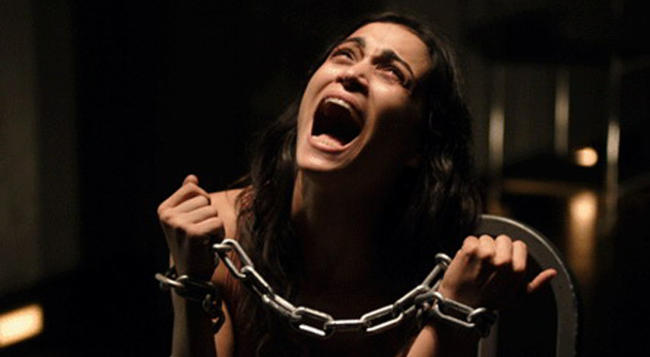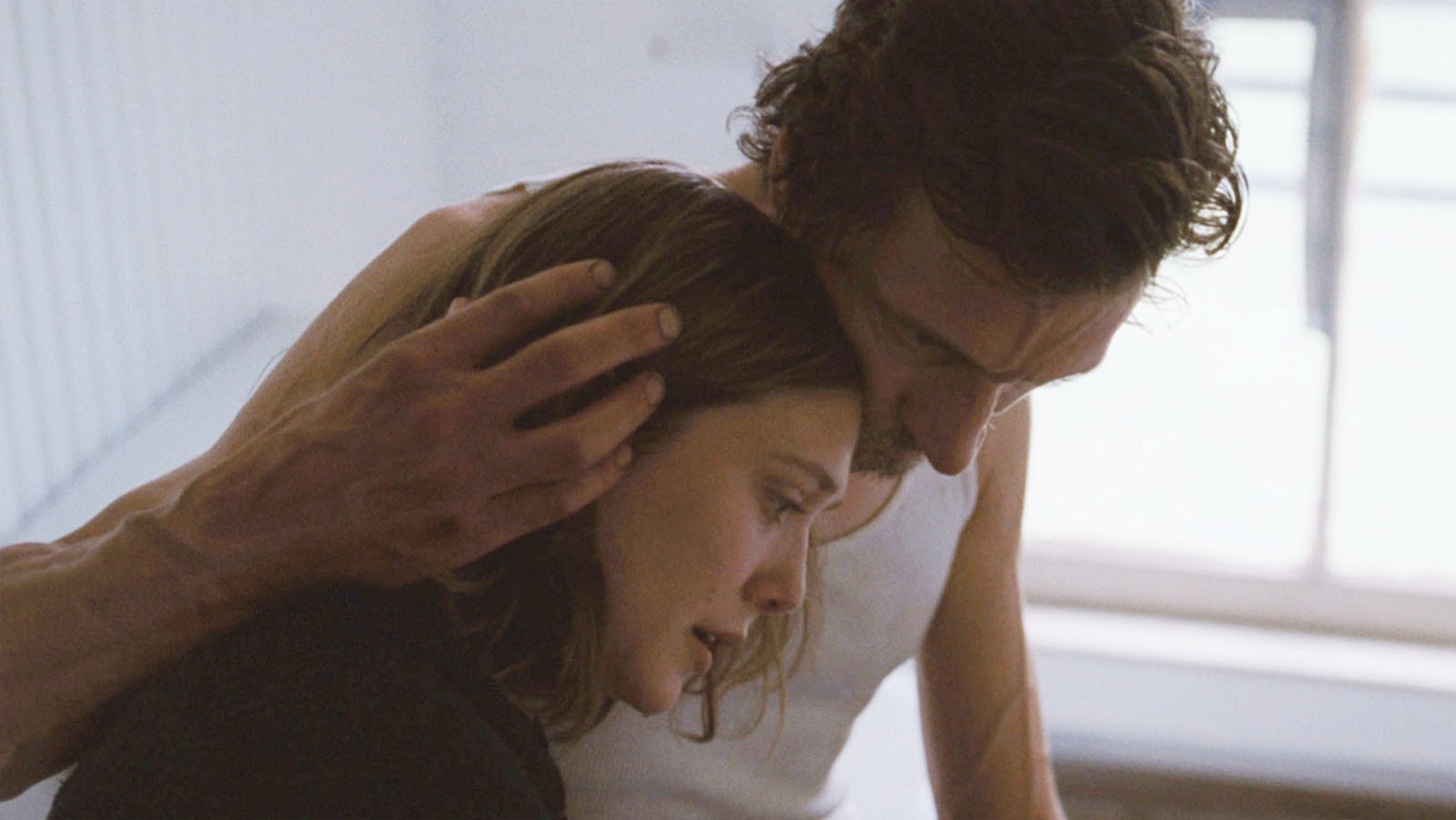14. The Blood on Satan’s Claw (1971)
In 17th century England… “A living nightmare of black magic… And unspeakable evil!” Piers Haggard’s classic The Blood on Satan’s Claw, attempts to revive England’s Pagan ways, in a somewhat cheesy, but enjoyable way. The film opens with the discovery of a skull in the soil, being ploughed by a villager.
It is taken to be inspected by ‘The Judge’ of the town, but it disappears. From then on, the townsfolk have unexplained hair growing on their bodies, the villagers are overcome by fevers and craziness. Angel leads a small Satanic cult that follow her out into the woods to do rituals to bring forth their master.
The setting is fantastic, rural, quiet. Simple. It is the atmosphere created from the cinematography and setting that really brings this film to life. The soundtrack works very well too.
13. The Devils (1971)
Ken Russell’s The Devils is based on Aldous Huxley’s book The Devils of Loudun. Set in 17th Century plague-ridden France, Sister Jeanne is the head nun of local convent. She becomes sexually obsessed with the priest, Grandier, who has been appointed to run the town. She requests that he become the new confessor for the convent. She hears that he has been married and this sends her into total, bad-shit crazy, insanity.
The other sisters in the convent follow suit and Grandier is accused of witchcraft. A witch-hunter comes to town to perform exorcisms and Sister Jeanne informs him that Grandier has bewitched her and all her sisters with devils.
The Devils was very controversial upon it’s release, and for many years afterward. It has been cut in different ways but it is now available in an uncut and restored version. The film is loosely based on true events, although how accurate those accounts. Not for the faint of heart, but for lovers of horror, the macabre and fantastic film-making, it is a must see.
12. Don’t Deliver Us From Evil (1971)
Joël Séria’s first feature film Don’t Deliver Us From Evil is very loosely based on the Parker-Hulme murder in New Zealand in 1954. The cult aspect in this film is slightly different to the others on this list, as the girls are the cult in themselves. Anne and Lore are best friends and neighbours. Anne finds pornographic literature and convinces Lore to join her.
Together they wish to break the boredom and authoritative pressure of the convent they attend. As friends they are very entwined with each other.
As their budding sexuality grows and they are sent out on vacation, they agree to make a pact with the Devil; with the help of their school gardener. They aim to do only evil and sexual acts, anything that will blaspheme against their upbringing at the strict Catholic convent school. With the freedom of their holiday, Anne and Lore desire to do anything they can to upset the balance between good and evil.
There are differing opinions on this film considering how young the actresses look, even though they were around 19-20 years old at the time. The dream-like quality of the filming and the cinematography are captivating, although the erotic nature of the film may disturb some viewers.
11. Elmer Gantry (1960)
Richard Brook’s Elmer Gantry, based on the novel by Sinclair Lewis, presents Elmer (Burt Lancaster) as a booze drinking salesman who has often used biblical knowledge to further sales and his travelling lifestyle. One Christmas he comes across one of Sister Sharon Falconer’s (Jean Simmons) sisters in a bar, looking for donations. He cons her into getting more information about Sister Sharon so he can weasel his way into her good books and her congregation.
Sister Sharon is the lead speaker of a travelling Evangelical Revivalist road-show. Elmer’s charm, wit and knowledge of the bible – and also his way of bringing money toward something he wants, makes them a great duo. Their love for each other and their love for God lead to some startling conclusions.
This film is a little different to some of the others on this list, but it shows how easily Gantry can take control and manipulate situations. Elmer Gantry won 3 Oscars – Best Actor, Best Supporting Actor and Best Screenplay adapted from another medium.
10. Jesus Camp (2006)
Jesus Camp follows three children who attended the Kids On Fire School of Ministry in 2005, a Pentecostal Summer camp in North Dakota. The documentary aims to show an unbiased opinion – and certainly, since it’s release, there have been many. The camp was closed down due to negative reactions and abusive phone calls. It has been reformed as Kids in Ministry International after the fall out and publicity from this documentary.
As an audience, we meet Levi – “At five I got saved… Because I just wanted more out of life”; Rachael – “I feel like we’re kind of being trained to be warriors, but in a much funner way … there’s an excitement, yet peace at the same time too; it’s really cool.”; and Tory – “When I dance, I really have to make sure that that’s God, because people will notice when I’m dancing for the flesh.” The documentary provides a step-back and look observational style without forcing an opinion onto the viewer.
9. Martyrs (2008)
Pascal Laugier’s Martyrs is one of the more horrifically gorey on this list. It follows Lucie on a quest for revenge against those who imprisoned and tortured her as a child. Lucie’s friend Anna comes along, as she is used to taking care of her. After brutally killing the family Lucie believes is responsible for her torture, Anna cleans up the mess. Lucie falls further into delusion and mental deterioration and Anna finds it difficult to understand what has, and is happening.
A cult fronted by “Mademoiselle” arrives and their cause is explained. They believe that only through extreme suffering can one achieve martyrdom and experience the afterlife. This bourgeoisie cult does not feel anything for those they torture, they are only interested in answers that can fulfill themselves. It is an unrelenting ride through different elements of suffering and how far people will go in order to understand death. As Laugier mentioned in The Northlander:
“Fear of death. And knowing the Ultimate Secret. And that’s something that could happen in real life. I mean, you know that when society is completely driven by the power of money, … anything is possible. Everything is allowed… [capitalism] … breaks all the taboos of the power of money it’s very, very possible that one day some people with a lot of money will try to break the last thing that makes us all the same, all equal, that is to say Death. That’s an idea, and maybe it’s a poetic idea, but it’s very connected to the world we are living in.”
8. Martha Marcy May Marlene (2011)
Sean Durkin’s first feature was Martha Marcy May Marlene, the confusing title leads into the confusing nature of the protagonist Martha (brilliantly acted by Elizabeth Olsen). The film begins with Martha calling her sister Lucy (Sarah Paulson) asking her for help. Lucy comes to collect her and brings her back to stay at her home with her husband Ted (Hannibal’s Hugh Dancy).
Martha has been living in a self sufficient community in the Catskill Mountains, while she was there she was known as Marcy May, but this remains a secret from Lucy and Ted. The film plays out through present time, memory and hallucination – at times it is unclear what has actually happened and what has not.
The film received good reviews from critics. It’s ambiguity is a nice touch – we never know who Martha really is, whether she really knows herself or not.
There could have been more explanation to why she was involved with the community; but the film is more about the struggle of dealing with the aftermath of being in a group of people whose ideals vary to the normalities of society. Situations like the ones portrayed in Martha Marcy May Marlene are often unheard of or imagined. This film invites the viewer to experience these ideas.

